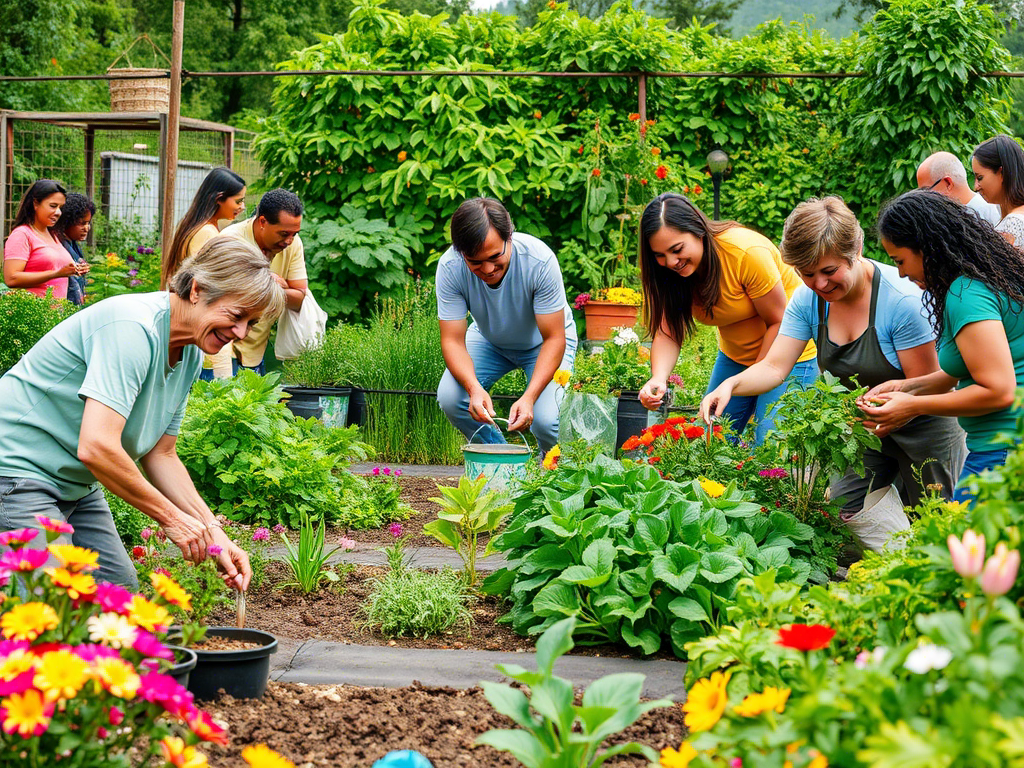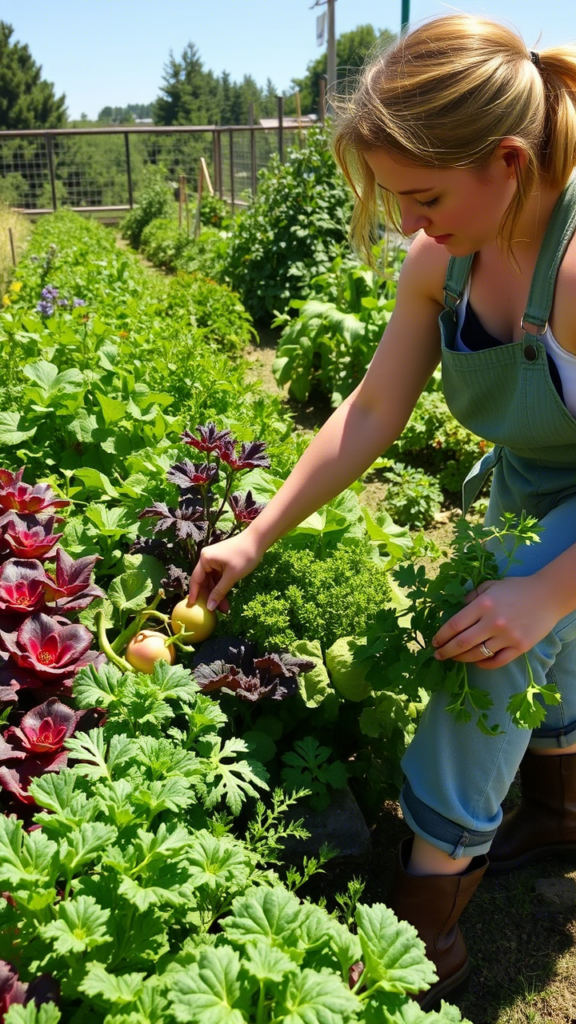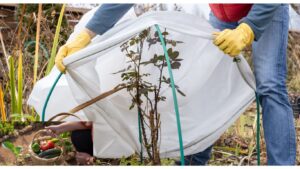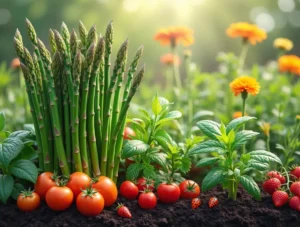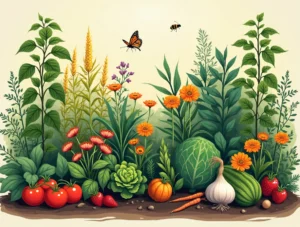Gardening for Health and Wellness: Cultivate Fitness, Mindfulness & Community
Gardening isn’t just about growing plants—it’s about growing yourself. Imagine a practice that strengthens your muscles as you dig, calms your mind as you prune, and connects you to neighbors as you share fresh-picked tomatoes. This is the power of gardening for health and wellness: a holistic ritual that science and tradition alike praise as a remedy for modern life’s chaos.
From ancient Indigenous land-care practices to Japanese shinrin-yoku (forest bathing), cultures worldwide have long understood that working with soil and plants heals more than the earth—it heals us. Today, researchers validate what gardeners have always felt: digging, planting, and nurturing green life can lower stress hormones, boost immunity, and even rebuild communities.
In this guide, we’ll explore how gardening transforms your body through physical activity, your mind through therapeutic engagement, and your world through sustainable, community-driven action. Whether you’re rehabilitating an injury, seeking mental clarity, or craving connection, gardening offers a path to wellness that’s as natural as the soil beneath your feet. Let’s unearth how to turn your garden—or windowsill—into a sanctuary for holistic health.
On This Page
How Gardening Nurtures Your Body
Gardening is nature’s gym—a space where every squat, lift, and stretch strengthens your body while creating beauty. Unlike repetitive gym routines, gardening transforms exercise into purposeful action, blending calorie-burning tasks with the satisfaction of nurturing life. Let’s break down how this practice fuels physical wellness.
Gardening as Exercise: Burn Calories, Build Strength
Forget the treadmill—your backyard is a fitness playground. Studies show that 30 minutes of gardening can burn:
- 150–300 calories (equivalent to a brisk walk or light cycling).
- Digging and shoveling engage your arms, core, and legs, mimicking strength-training exercises.
- Weeding and planting improve flexibility and fine motor skills.
Pro Tip: Turn gardening into interval training! Alternate high-intensity tasks (e.g., raking) with low-intensity ones (e.g., watering) to boost cardiovascular health.
Nutrition from Your Backyard: Grow Your Way to Healthier Eating
What you grow, you eat—and homegrown food packs a nutritional punch. For example:
- Tomatoes from your garden contain up to 30% more vitamin C than store-bought varieties.
- Leafy greens like kale and spinach retain more nutrients when picked fresh.
Quick Win: Start with herbs like basil or mint. They’re easy to grow, elevate meals, and reduce reliance on processed seasonings.
Safety & Accessibility: Gardening for Every Body
Gardening is for everyone—no matter your age, mobility, or space constraints. Adapt the practice to your needs:
- Ergonomic Tools: Use padded kneelers or long-handled tools to protect joints.
- Raised Beds: Ideal for wheelchair users or those with chronic pain.
- Container Gardening: Grow herbs or dwarf veggies on balconies or windowsills.
Did You Know? Adaptive gardening programs, like those for seniors or stroke survivors, use therapeutic tools to restore physical function and independence.
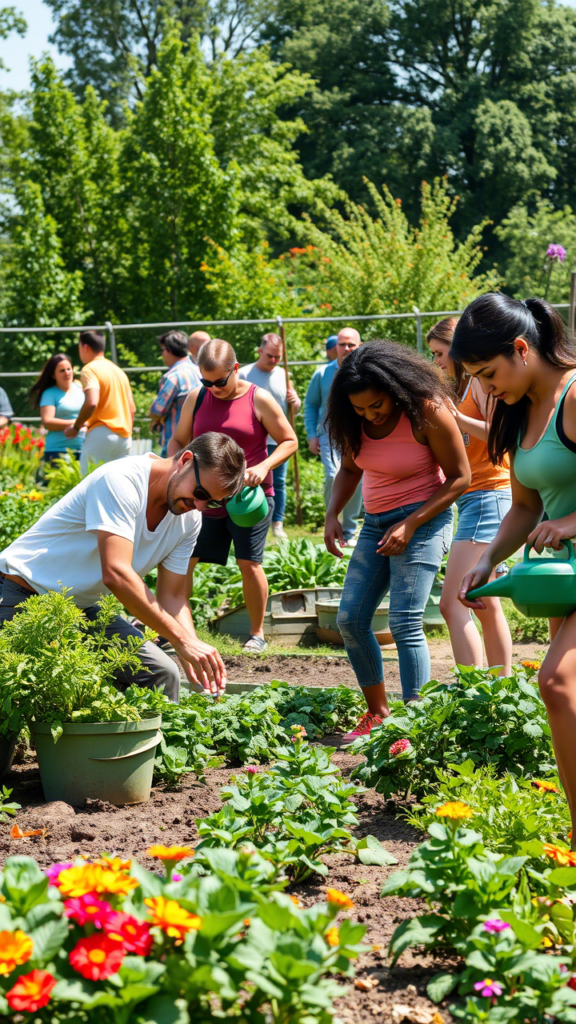
How Gardening Heals Your Mind
Gardening is therapy without a couch—a practice where the rhythm of planting and pruning quiets mental chatter, and the scent of soil becomes an antidote to anxiety. Science reveals that this connection to nature isn’t poetic whimsy; it’s biology. Let’s dig into how gardening rewires your brain for calm, clarity, and resilience.
Stress Reduction & Emotional Resilience
The simple act of touching soil can lower stress hormones. Here’s why:
- Soil Microbes & Serotonin: Mycobacterium vaccae, a friendly soil bacteria, triggers serotonin release—a neurotransmitter linked to happiness. Studies show gardeners have 16% lower cortisol levels than non-gardeners.
- Nature’s Rhythm: Repetitive tasks like weeding or watering induce meditative states, reducing symptoms of anxiety and depression.
Real-World Impact: A 2021 study in PLOS ONE found that gardening daily for three months improved mood as effectively as cognitive-behavioral therapy for some participants.
Therapeutic Gardening: Healing Trauma and Loss
Gardening isn’t just a hobby—it’s a clinical tool. Horticultural therapy is used to:
- Combat PTSD: Veterans tending to community gardens report reduced flashbacks and improved sleep.
- Support Dementia Care: Sensory gardens with lavender and rosemary stimulate memory and reduce agitation in Alzheimer’s patients.
- Rehabilitate Injuries: Stroke survivors regain motor skills through adaptive gardening tasks like potting plants.
Case Study: The Brooklyn Botanic Garden’s “GreenBridges” program partners with hospitals to prescribe gardening for trauma recovery, with 78% of participants reporting improved emotional well-being.
Mindful Gardening: A Practice in Presence
Transform your garden into a mindfulness studio:
- Sensory Anchoring: Focus on the scent of basil, the texture of soil, or the sound of rustling leaves to stay grounded.
- Breathwork While Planting: Sync your breath with movements (inhale as you dig, exhale as you plant).
- Gratitude Journaling: Reflect on daily growth—literal and metaphorical—in a gardening journal.
Pro Tip: Start with 10-minute “mindful gardening” sessions to build focus and reduce mental clutter.
Community Gardening: Social Bonds and Shared Harvests
Breaking Isolation, Growing Connections
Community gardens are vibrant hubs where strangers become neighbors and loneliness withers away. For example:
- NYC’s GreenThumb Program, the largest urban gardening initiative in the U.S., reports that 82% of participants feel a stronger sense of belonging.
- Shared Harvests: Many gardens donate surplus produce to food banks, addressing food insecurity while fostering empathy.
Family & Inter-generational Bonding
- Teach children responsibility by growing sunflowers or strawberries.
- Elderly gardeners share wisdom with younger generations, preserving cultural traditions like seed-saving or herbal remedies.
Budget-Friendly Wellness:
- Pool resources with neighbors for tools, seeds, and compost, reducing costs and waste.
Environmental Stewardship: Gardening for Planetary Health
Small Actions, Global Impact
Your garden is a microcosm of sustainability:
- Composting: Redirect kitchen scraps from landfills, cutting methane emissions while enriching soil.
- Pollinator Gardens: Plant native flowers like milkweed and coneflowers to support bees and butterflies—critical pollinators for 75% of global food crops.
- Rainwater Harvesting: Use barrels to collect runoff, conserving water and reducing reliance on treated supplies.
Sustainable Gardening Tips:
- Avoid synthetic pesticides; opt for neem oil or companion planting.
- Choose drought-resistant plants (e.g., lavender, succulents) to save water.
Accessibility in Community Gardens: Growing Inclusivity
Gardens for All
- Design Adaptations: Raised beds, wide pathways, and vertical planters ensure wheelchair accessibility.
- Programs for Diverse Needs:
- Sensory gardens with fragrant herbs for visually impaired individuals.
- Therapy plots for veterans or trauma survivors, managed in partnership with healthcare providers.
Case Study: Seattle’ Danny Woo Community Garden integrates ADA-compliant plots and hosts workshops in multiple languages, bridging cultural and physical barriers.
Cultivate Community & Sustainability
- Find a Garden: Use platforms like CommunityGarden.org to locate nearby plots.
- Start Small: Organize a neighborhood seed swap or compost cooperative.
- Advocate: Push for green spaces in urban planning to ensure equitable access.
- Did You Know?
- Urban gardens can reduce local temperatures by up to 7°F, combating the “heat island” effect.
- Composting at home diverts 150+ pounds of waste annually per household.
Cultivating a Life of Wellness—One Seed at a Time
Gardening is more than a hobby—it’s a revolution in self-care, community building, and environmental healing. From strengthening your body through calorie-burning tasks to soothing your mind with soil’s serotonin-boosting microbes, this practice weaves physical, mental, and social wellness into a single, sustainable act. Whether you’re growing basil on a windowsill or tomatoes in a community plot, every seed planted is a step toward a healthier you and a greener world.
Your Wellness Journey Starts Here
- Begin Small, Grow Bold:
- Start with low-effort plants like succulents, herbs, or cherry tomatoes.
- Repurpose household items (mason jars, egg cartons) as planters to keep costs low.
- Track Your Progress:
- Journal mood shifts, physical activity levels, or harvest milestones.
- Share your journey on social media to inspire others (use hashtags like #WellnessGardening).
- Connect & Collaborate:
- Join a community garden or start a neighborhood compost initiative.
- Swap seeds, tools, or tips with fellow gardeners to build bonds and reduce waste.
- Garden Mindfully, Garden Sustainably:
- Prioritize native plants and organic practices to protect local ecosystems.
- Advocate for green spaces in urban areas to ensure everyone can access nature’s therapy.
Final Thought:
“In nurturing a garden, you nurture yourself.” This timeless truth reminds us that wellness isn’t a destination—it’s a daily practice. As you dig, plant, and grow, you’re not just cultivating flowers or veggies. You’re cultivating resilience, joy, and a legacy of care that extends far beyond your backyard.
Your garden is your sanctuary. Your hands are the tools. The earth is your partner. Now, go grow.
FAQs
How does gardening improve physical health?
Gardening is a full-body workout that burns calories, builds strength, and improves flexibility. Activities like digging, planting, and weeding engage multiple muscle groups, while tasks like raking and watering boost cardiovascular health. Studies show that 30 minutes of gardening can burn up to 300 calories, making it a great alternative to traditional exercise.
Can gardening really reduce stress and anxiety?
Yes! Gardening has been proven to lower cortisol levels (the stress hormone) and increase serotonin production, thanks to soil microbes like Mycobacterium vaccae. The repetitive, meditative nature of gardening tasks also promotes mindfulness, helping to calm the mind and reduce anxiety.
What is therapeutic gardening?
Therapeutic gardening, or horticultural therapy, uses gardening activities to improve physical, mental, and emotional well-being. It’s often used in clinical settings to help individuals with PTSD, dementia, or physical disabilities. Programs may include sensory gardens, adaptive tools, and guided activities tailored to participants’ needs.
How can I practice mindfulness while gardening?
Mindful gardening involves focusing on the present moment through sensory engagement. For example:
Feel the texture of soil as you plant seeds.
Listen to the rustling of leaves or chirping of birds.
Smell the fragrance of herbs or flowers.
Pair these practices with deep breathing or gratitude journaling for added benefits.
What are the benefits of community gardening?
Community gardening fosters social connections, reduces loneliness, and promotes food security. Shared gardens often donate surplus produce to local food banks, addressing hunger while building stronger neighborhoods. They also provide opportunities for intergenerational learning and cultural exchange.
How can I start gardening if I have limited space or mobility?
You don’t need a large yard to enjoy gardening! Try these options:
Container Gardening: Use pots or window boxes for herbs, flowers, or small veggies.
Vertical Gardens: Install wall planters or trellises to maximize space.
Adaptive Tools: Use ergonomic tools, raised beds, or kneeling benches to reduce strain.
What are some easy plants to grow for beginners?
Start with low-maintenance plants like:
Herbs: Basil, mint, or parsley.
Veggies: Cherry tomatoes, lettuce, or radishes.
Flowers: Sunflowers, marigolds, or succulents.
These plants are forgiving and provide quick rewards, making them perfect for new gardeners.
How does gardening benefit the environment?
Gardening promotes sustainability by:
Reducing Waste: Composting kitchen scraps diverts organic waste from landfills.
Supporting Pollinators: Planting native flowers helps bees, butterflies, and other pollinators thrive.
Conserving Water: Rainwater harvesting and drought-resistant plants reduce water usage.
Can gardening help with mental health conditions like depression?
Yes, gardening has been shown to alleviate symptoms of depression by providing a sense of purpose, routine, and accomplishment. The combination of physical activity, exposure to nature, and social interaction (in community gardens) can significantly improve mood and emotional resilience.
10. How do I find a community garden near me?
Use platforms like CommunityGarden.org or check with local parks and recreation departments. Many cities also have urban gardening initiatives, such as NYC’s GreenThumb program, which offers resources and support for community gardeners.
